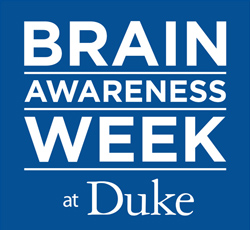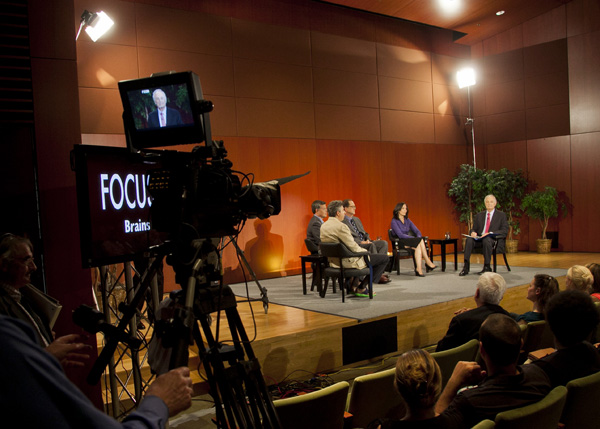By Sonal Gagrani
Imagine having a head full of things to say, but not being able to articulate them. This is the life of Carl McIntyre.

courtesy of aphasiathemovie.com
There is a three-hour window of opportunity after the initiation of a stroke in which it can be effectively treated. However, when a stroke hit Carl McIntyre, those three hours passed before he could be safely withdrawn from danger. His ability to speak and understand became heavily impaired, a condition known as aphasia. In order to raise awareness of this condition that affects not only him, but almost 40% of the people who suffer a stroke, he starred as himself in a film called Aphasia. Carl McIntyre came himself to speak at Duke for Brain Awareness Week following a screening of his film.
 Aphasia is a group of communication disorders that affect the language centers of the brain causing impairments in speech, speech comprehension, reading and writing. It tends to arise with damage of some part of the brain, often due to a stroke, brain tumors, or neurodegenerative diseases.
Aphasia is a group of communication disorders that affect the language centers of the brain causing impairments in speech, speech comprehension, reading and writing. It tends to arise with damage of some part of the brain, often due to a stroke, brain tumors, or neurodegenerative diseases.
McIntyre expressed powerfully that, “what happens to one, happens to two.” The aphasia affects not only him but his entire family. Life felt as if it was over, loving was difficult; he felt “trapped inside of his head.” Having a reservoir full of thoughts that he was unable to empty due to this inability to communicate could be eternally frustrating. Aphasia patients often are cognitively intact, but have trouble expressing what they want to say. McIntyre occasionally used a whiteboard to write down words he was struggling to say or stumbled on the first sounds of words.
 But rather than letting the aphasia control the way that he lived, McIntyre worked hard to restore his language capabilities and spread awareness of the challenges that inflicted individuals must face. Most importantly, McIntyre expressed the importance of keeping hope.
But rather than letting the aphasia control the way that he lived, McIntyre worked hard to restore his language capabilities and spread awareness of the challenges that inflicted individuals must face. Most importantly, McIntyre expressed the importance of keeping hope.
He explained that the first step to having a positive outlook on his condition was to accept the “old Carl was dead.” The next was to keep hope that his life could continue as normal as possible – that the condition would not impair his lifestyle. Last, he expressed the importance of having a sense a purpose by picking up hobbies and not losing all meaning in life. Carl strives to have a strong sense of self despite the adversities he and his family has had to face and inspires others to understand and do just this.


















